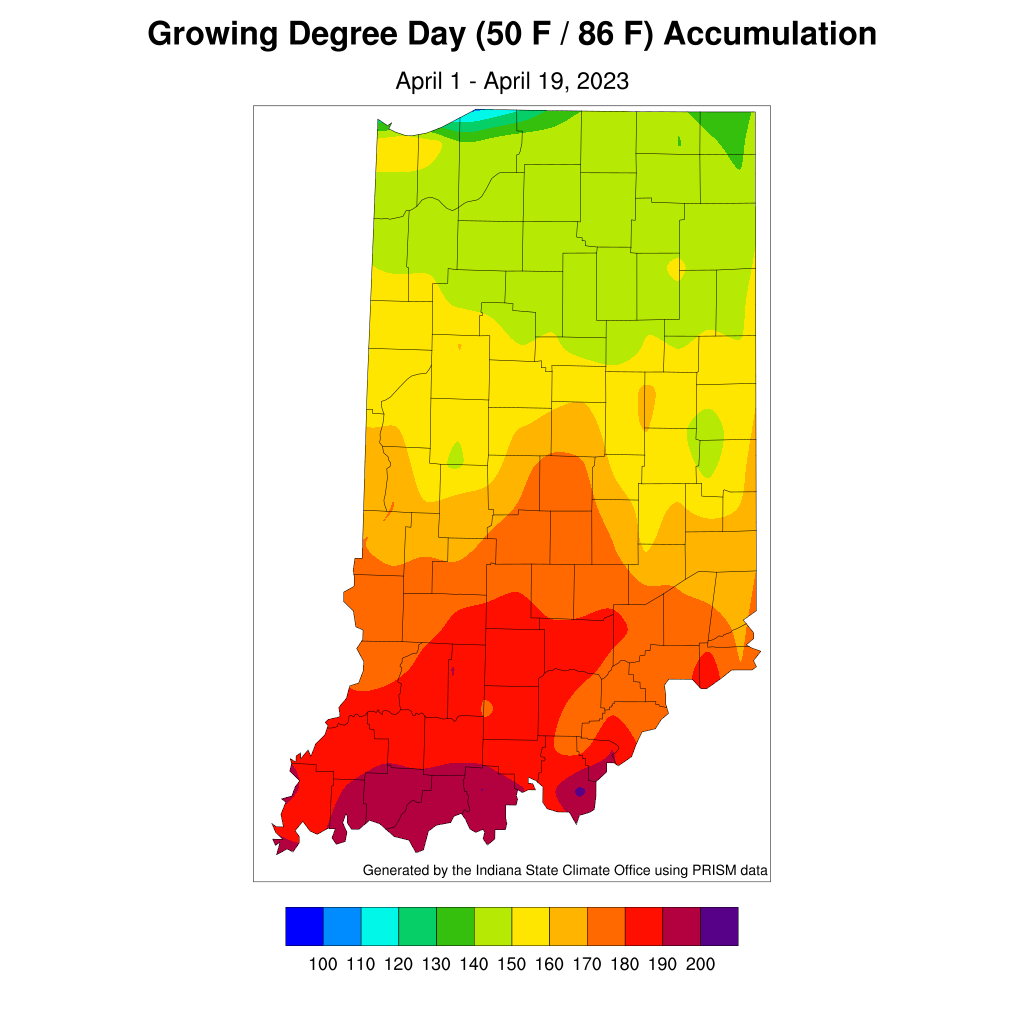Many factors (many of them unpredictable) determine an insect outbreak. As we take the wait-and-see approach toward planting and subsequent insect infestations, lets discuss a few of the variables:
Insect dispersal is the phenomenon by which insects move from one place to another. The distance that they can move is quite variable among species. Black cutworm moths, on their own power, can fly no further than a few miles. They are often caught up in wind currents of developing storms in southern regions of the United States and carried to the Midwest. They are then deposited back to ground level as storms pass through. Predicting the location and intensity of a spring thunderstorm is difficult, as is the prediction of locations and intensities of infestations of cutworms and other migratory pests. This is where pheromone trapping comes in: with the help of our loyal cooperators throughout the state we can keep an eye on the “arrival rate” and know when to start scouting. For example, following major storm activity in the state April 1 of this year, our trappers throughout the state captured a significant number of moths.
Although many adult insects don’t feed, abundant and consistent food sources are necessary for many insect larvae (caterpillars, grubs etc.) to survive. Black cutworm female moths, laden with eggs, cue onto healthy, green plants for egg-laying soon after their arrival. As mentioned last week, winter annual weeds in crop fields are very attractive egg-laying sites. When these weeds are terminated after eggs have been deposited, surviving larvae are very limited in mobility, and will feed upon anything within reach. This is when damage to the crop can happen. Although in preference tests, corn and soybean are not their favorite foods, this is far preferable to starving.
Temperature dictates all insect activity, rate of development, and reproduction. Insects are “cold-blooded” and they require an external heat source, meaning their behaviors are very strongly linked to changes in temperature. The temperature above which an insect grows and develops is called a developmental threshold. The minimum threshold for black cutworm has been established at 50°F. At temperatures lower than this (quite common during springtime in Indiana) they remain inactive until conditions become favorable. Though adults and larvae can freeze to death, short periods below freezing are not sufficient to kill them – freezing to death is not typically a large source of mortality at this time of year. At approximately 300 accumulated heat units (50°F base), black cutworm larvae are large enough to cut corn seedlings. From our first major influx of moths (April 1), heat unit accumulations have reached nearly 200 in extreme southern Indiana (see accompanying contour map). That said, with current and future warming temperatures, it won’t be long!
In predicting insect infestations, timing is everything. There are other variables to consider, but timing of when and how all these factors (migration, food availability, development temps) “collide” ultimately determines the infestation. Hopefully this gives a clearer understanding of why cutworm outbreaks, although serious when they occur, are few and far between and often don’t get far enough for producers to notice.

From April 1, our first major black cutworm capture, this map shows accumulated degree days at 50-degree base. 300 accumulated degree days signals the need for scouting in high-risk emerging fields.

Black cutworm 2nd and 3rd instar larvae on a penny. 3rd instar, and larger, larvae can leaf feed on corn seedlings and begin cutting.


